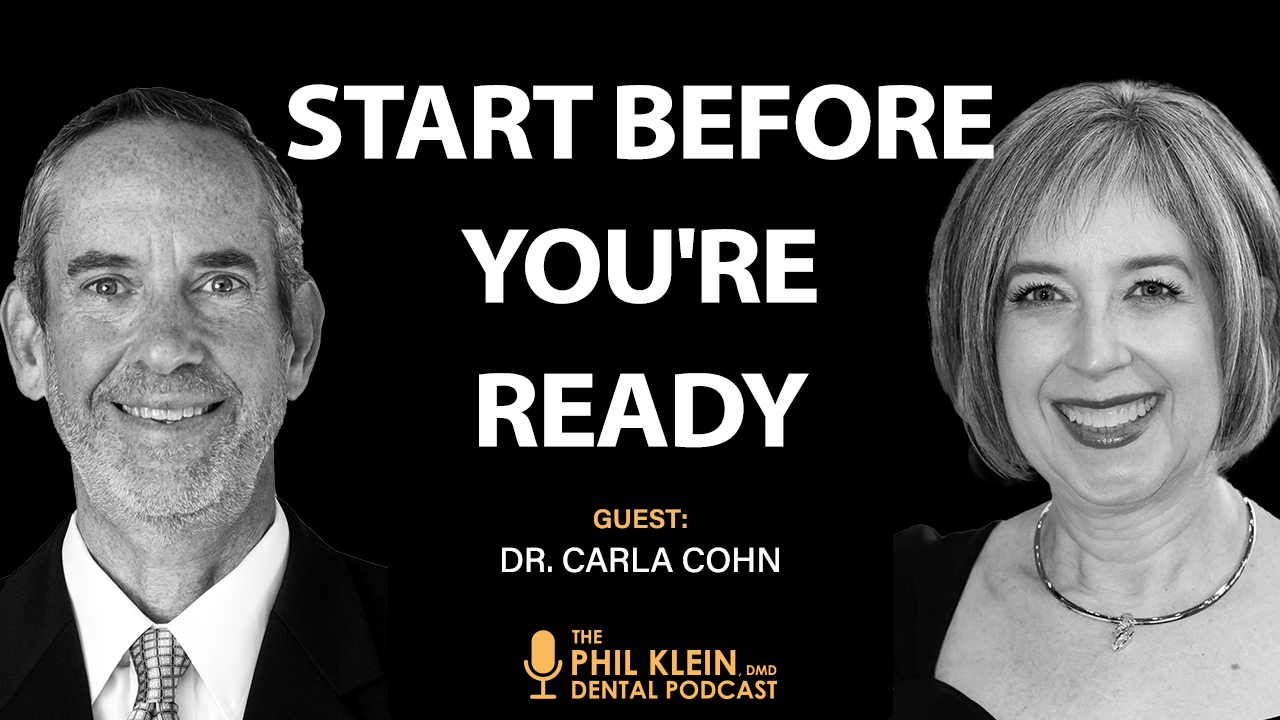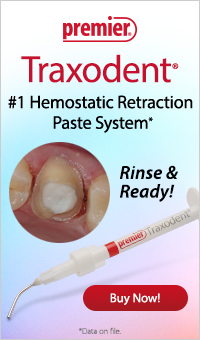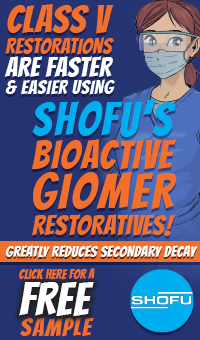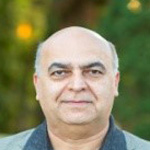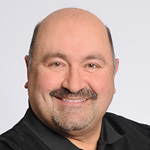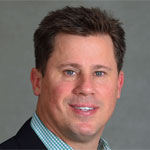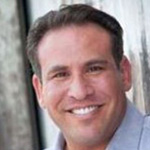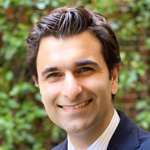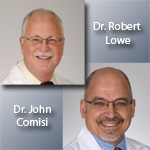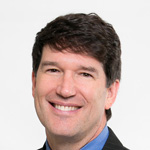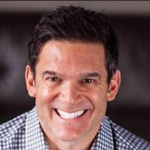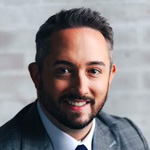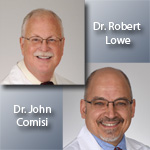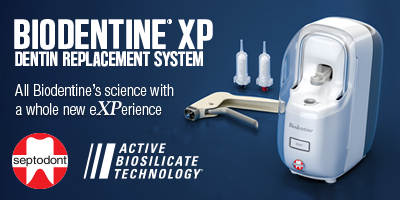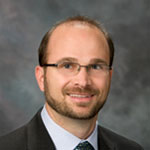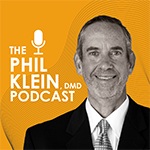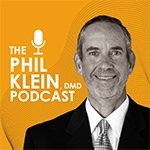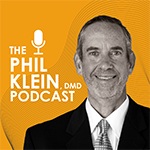Cosmetic dentistry is no longer a novelty as it was in the 1980s...it is serious business. Patient expectations are growing so that you must learn to master the art and science not only in the front but the back of the mouth. Fortunately, advancements in technology and materials have allowed dentists and their teams to be on the same page with the patient, lab, and specialist that help you create extra-ordinary results that are predictable and profitable for the practice and often affordable for patients.
There are many different options to provide workflow solutions through every stage of the patient care process. Through the years, technology has evolved to serve the best interests of the clinician and patient have set them apart in the industry. In this CE webinar, learn about how a standardized workflow benefits you and your patients with everyday benefits down to the smallest detail that saves you time and helps you care for your patients.
This CE webinar is geared towards General Dentists interested in reviewing the basic principles behind all orthodontic tooth movement, as well as highlight critical differences in aligner design, aligner mechanics and treatment planning that may not be immediately apparent. Finally, this webinar will review and discuss simple to use technology that we all use in everyday life that can be easily incorporated into clear aligner therapy to significantly improve clinical oversight, while simultaneously increasing case profitability without any need for additional staff.
A dynamic and synergistic relationship exists between oral health and nutrition. A diet consisting of frequent consumption of sugar and fermentable carbohydrates is associated with caries disease, periodontal disease, and other dental problems. While it is common knowledge that too much sugar can lead to poor oral health, the mechanism of action behind this process is often misunderstood. In this CE webinar, attendees will learn how sugar is hydrolyzed in the oral cavity and contributes to poor oral health in the presence of malnutrition in a scientific yet simple manner.
In this CE webinar, learn how to avoid the most common sources of failures of implant retained multi-unit restorations, and gain a better understanding of the variety of materials and manufacturing methods for hybrid dentures. Case presentation and discussion topics will include:
• Prep and bar design
• Manufacturing methods: Milling vs Printing
• Material selection: Zirconia, Nano Ceramics and PMMA
With implant expansion, doctors of all levels can optimize their skills with 3D printed surgical guide implant placement. In this CE webinar, learn how to achieve optimal, safe, and efficient results using these skills.
In this CE webinar, we will look at some of the new advancements in dental restorative materials with the goal of making your dentistry more predictable. Our discussion will include everything from direct to indirect restorative techniques. These techniques will not only increase your esthetic outcomes but increase the physical properties of your restorations as well.
In this CE webinar you will:
• Understand the extensive data and testing showing the safety and efficacy of heated composite
• Learn the art and science of co-curing multi-viscosity composites (surfactant resin plus heated flowable plus heated paste composite)
• Achieve confidence in matrix, wedge and separator selection and modern compression based Class II preparations
The modern dental professional is better prepared to diagnose and execute complex cases today than ever before, yet one major hurdle remains unchanged: the patient's financial ability to accept treatment. Financing solutions were developed to help patients overcome cost as a barrier, yet they continue to underserve you and your patients—88% of dental professionals report they are not completely satisfied with their existing solution. This CE webinar reviews the flaws with financing and how practices are modernizing their approach with a new technology that expands patient acceptance of extensive treatment, resulting in increased productivity and completion of cases that would otherwise not be treated.
Upon completion of this CE webinar, the student will:
• Understand, identify and be able to sculpt appropriate anterior anatomy (line angles, lobes, emergence) and posterior anatomy (fossa, cusps, tertiary grooves).
• Attain proficiency in placing surface texture to match natural tooth structure and in polishing direct composite to a high luster while maintaining the texture.
• Be able to deliver undetectable direct composite restorations
In this second part of the 2 part live panel discussion, Drs. Robert A. Lowe and John C. Comisi from the Medical University of South Carolina, James B. Edwards College of Dental Medicine in Charleston, SC discuss the use of heated composites in direct restorative dentistry. For many years, composite materials have been described as “packable” and “condensable”. Is this actually true? In this segment, the doctors will take a ”deep dive” into the myriad of composite materials and placement techniques and discuss how heated composites can help solve many of the common problems encountered in “every day” practice.
"It can't be done like that where I live!" or..."We just need more new patients!" or...Maybe you just need to slow down, ask better questions, out-listen the competition, use cutting-edge diagnostic photography with advanced caries detection, and apply time-tested human relations principles to thrive during turbulent times. In this CE webinar, enjoy a fast-paced, interactive workshop experience where we will master the art of an exceptional new patient experience, offer a comprehensive treatment plan, and deliver a bulletproof case presentation resulting in an increased case acceptance, more optimal care dentistry, and fun!
During this CE webinar, we will
• implement comprehensive treatment planning and execution through data collection and restorative approaches
• build lab communication and smile design through photography and diagnostic records
• implement advances in dental materials, bonding protocols and restorative solutions for best outcomes
What’s in your toolkit? How does your equipment impact patient care and the long-term health of longevity of your career? The implementation of quality dental equipment extends beyond basic patient care. No longer are ultrasonics intended only for calculus removal, the importance of biofilm disruption and reduction of inflammation are key in disease treatment and prevention. Choosing the correct equipment, ultrasonic tip and ideal adaption is important to improved oral health outcomes and patient comfort.
During this CE webinar, we will
• learn how to perform simple soft tissue biopsies utilizing instruments you already have in your office
• determine if a lesion is most likely benign or malignant
• understand the importance of autofluorescence when determining biopsy margins
• know how to bill patients/insurance companies for oral cancer examinations using autofluorescence devices
Implementing the AAP classifications can seem overwhelming. In this CE webinar, discover how to execute the classification system to increase insurance coverage confidently, patient acceptance, and adequately treat patients based on their Periodontal Risk.
In this CE webinar, attendees will learn:
• Full proof techniques for tissue management
• The latest in material advancements
• Variations in approach to tackle all clinical scenarios
• Clinical pearls that lead to accurate impressions "the first time, every time"
In this CE webinar, we will review the different systems on the market as well as those on the horizon. The pros and cons of bleaching will be covered, as well as the use of different light sources to speed up the whitening process. Issues of sensitivity, mechanism of action and longevity will be discussed. Materials in this webinar will rely on scientific evidence from the literature as well as from clinical experiences.
In the last 10 years, there has been improvements in the preparation, seating, and finishing of anterior esthetic restorations. This CE webinar will review, with clinical cases, important clinical guidelines on case selection and avoidance, smile design and corrections techniques, new aesthetic materials, conservative preparation designs, impression techniques to achieve predictable results and seating and finishing tips.
During this CE webinar, we will
• Summarize available treatment solutions for tethered oral tissues.
• Discuss the diagnosis of snoring.
• Describe treatment of snoring with the 9.3 micron laser-assisted application
Despite advancing technologies in dental caries and prevention it remains one of the most common oral diseases globally. Dental health care practitioners are challenged to continually evaluate current research and incorporate findings into clinical practice to adequately equip their patients with health promotion and preventive strategies. With a paradigm shift from drill and fill to minimally invasive dentistry, which focuses on conservation of tooth structure, a medical model of disease management needs to be incorporated. The caries management plan for each individual should be based upon reducing caries risk factors and enhancing the protective factors with the additional aid of behavior modification coupled with minimal intervention restorative dentistry, if appropriate. This CE webinar will take a look at the latest evidence-based practical guidelines for caries management along with strategies to incorporate new treatment methods into daily practice.
Stressors in dentistry have never been higher. Increased cost of doing business, inflation, supply chain issues, and short staffing to name a few. It is so important, now more than ever, that we work efficiently. This CE webinar will review strategies to increase our efficiency in both direct and indirect restorative dentistry in order to keep costs down with out sacrificing quality.
In dental impressioning, there are so many variables that must be accounted for in order to achieve a great impression every attempt. Nowadays, with the introduction of digital intraoral scanners, this holds true perhaps more than ever. There are many ways to achieve an acceptable outcome, whether the approach be by conventional or digital technique. In this CE webinar, we will discuss materials methods that provide predictable results for both approaches.
In this CE webinar, Dr. Jean Creasey shares the nuts and bolts of her how own dental practice “prevented it’s way to success”. This webinar reviews why restoration alone is not a cure for caries disease and why focusing on strengthening tooth structure and modifying oral biofilms to favor dental health is key. It also emphasizes that dental caries must be managed as a chronic disease throughout a patients’ lifetime and that motivating patients to change is best achieved when the entire dental team is calibrated and committed to a prevention centered approach.
The mandate on today’s dental clinician and technician to deliver predictable high-strength and highly aesthetic restorations is continually increasing, however, many of the technique and tools necessary in the treatment planning and execution of these restorations remains nebulous. This CE webinar will illustrate straightforward treatment planning, material selection, and laboratory protocols for achieving uncommon results for successful patient outcomes.
In this CE webinar you can expect to learn about cavity preparation design for primary molars, placement techniques, order of operations, matrix placement, and material choice.
During this CE webinar, we will
• learn how to identify the armamentarium needed for the dental dam procedure and explain the function of each component
• explain how to prepare the patient for the dental dam placement, determine the isolation area, and describe and demonstrate how dental dam material is prepared
• gain the knowledge and be able to list and demonstrate the steps in placing and removing the dental dam
Denture technology has remained relatively unchanged for decades. Thanks to new record-taking techniques, sophisticated digital technology, advanced base and teeth materials, and precision-milling strategies, dentures are undergoing a paradigm shift. They are no longer your grandmother’s denture.
Advanced 3D digital software utilize anatomical landmarks and face overlays to more accurately position teeth in a consistent manner that can result in a reduced number of treatment appointments. Material and manufacturing breakthroughs allow the clinician to expect enhanced digital denture strength and esthetics. Implant-supported dentures and hybrid dentures have benefited the most from this wave innovation.
In this 2-part live panel discussion, Drs. Robert A. Lowe and John C. Comisi from the Medical University of South Carolina, James B. Edwards College of Dental Medicine in Charleston, SC discuss the use of heated composites in direct restorative dentistry. For many years, composite materials have been described as “packable” and “condensable”. Is this actually true? Since marginal adaptation and seal is an important component for long-term clinical success, traditional composite placement may not be the best way to achieve this goal. Heated composites may provide the clinician a more predictable way to deliver superior adaptation of the material to the cavity preparation without “condensation. If you are experiencing challenges with your composite restorations, this unique format “Q and A” format will allow you to ask the “professors” directly, as they discuss the clinical benefits and science behind the use of heated composites in restorative dentistry. This is a CE webinar series not to be missed!









